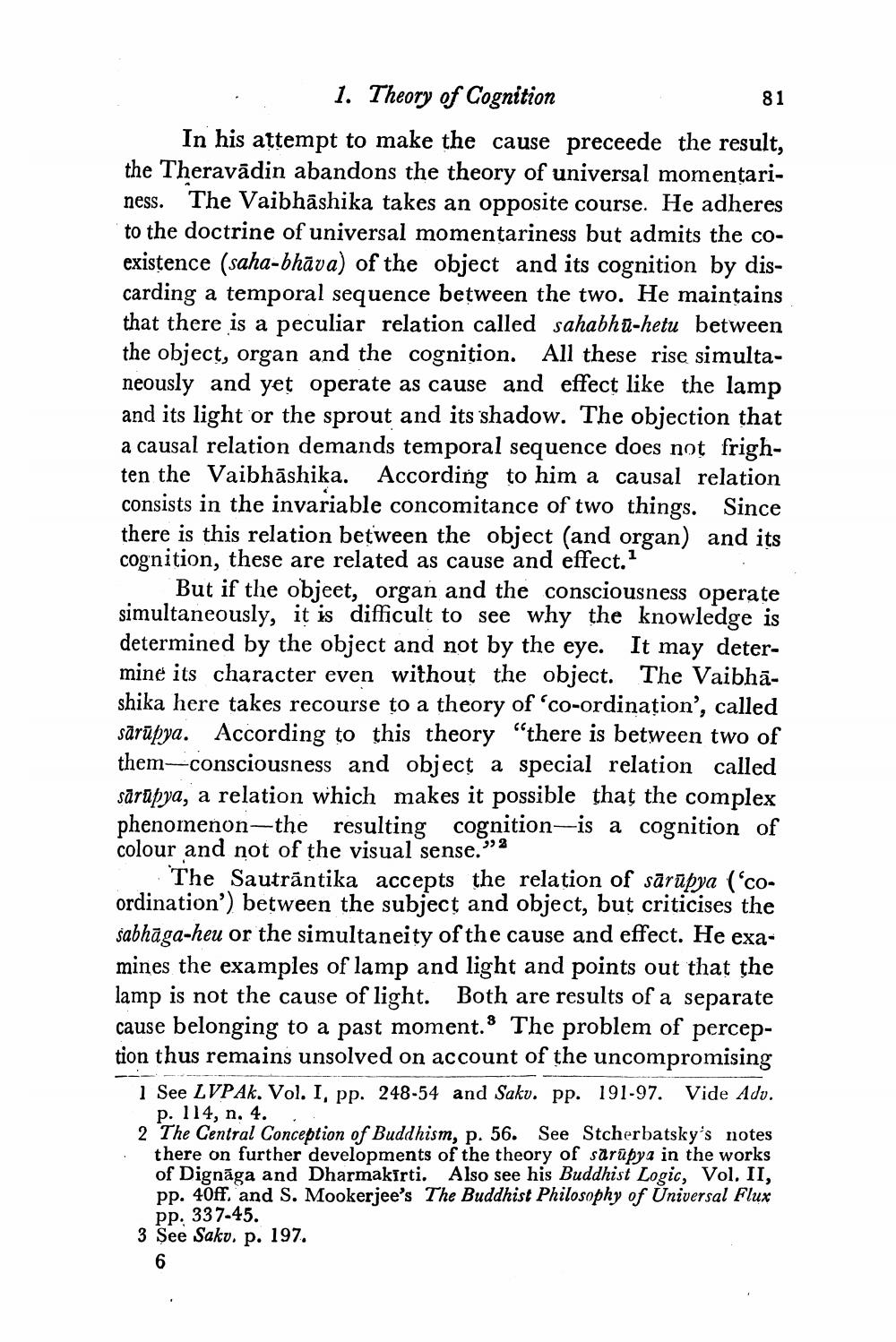________________ 81 1. Theory of Cognition In his attempt to make the cause preceede the result, the Theravadin abandons the theory of universal momentariness. The Vaibhashika takes an opposite course. He adheres to the doctrine of universal momentariness but admits the coexistence (saha-bhava) of the object and its cognition by discarding a temporal sequence between the two. He maintains that there is a peculiar relation called sahabhu-hetu between the object, organ and the cognition. All these rise simultaneously and yet operate as cause and effect like the lamp and its light or the sprout and its shadow. The objection that a causal relation demands temporal sequence does not frighten the Vaibhashika. According to him a causal relation consists in the invariable concomitance of two things. Since there is this relation between the object (and organ) and its cognition, these are related as cause and effect. But if the objeet, organ and the consciousness operate simultaneously, it is difficult to see why the knowledge is determined by the object and not by the eye. It may determine its character even without the object. The Vaibhashika here takes recourse to a theory of 'co-ordination', called sarupya. According to this theory "there is between two of them-consciousness and object a special relation called sarupya, a relation which makes it possible that the complex phenomenon-the resulting cognition-is a cognition of colour and not of the visual sense." The Sautrantika accepts the relation of sarupya ('coordination') between the subject and object, but criticises the sabhaga-heu or the simultaneity of the cause and effect. He examines the examples of lamp and light and points out that the lamp is not the cause of light. Both are results of a separate cause belonging to a past moment. 8 The problem of perception thus remains unsolved on account of the uncompromising I See LVPAk. Vol. I, pp. 248-54 and Saku. pp. 191-97. Vide Ado. p. 114, n. 4. . 2 The Central Conception of Buddhism, p. 56. See Stcherbatsky's notes there on further developments of the theory of sarupya in the works of Dignaga and Dharmakirti. Also see his Buddhist Logic, Vol. II, pp. 40ff. and S. Mookerjee's The Buddhist Philosophy of Universal Flux pp. 337-45. 3 See Saku. p. 197.




